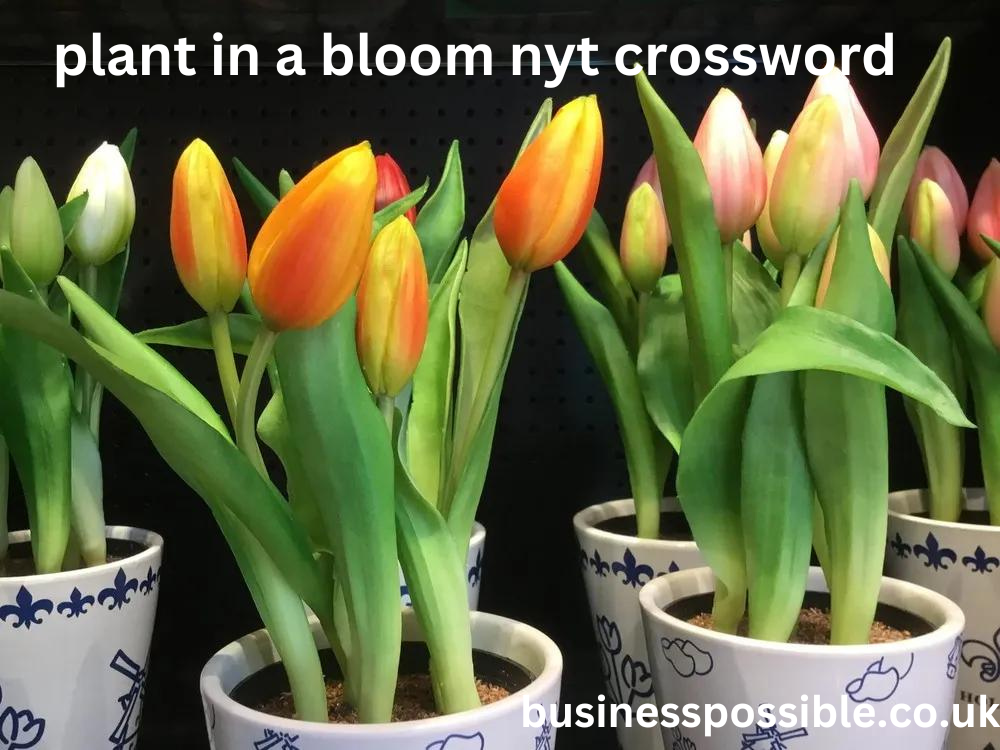Introduction
Crossword puzzles have long captivated enthusiasts with their challenging clues and intricate wordplay. Among the various themes and clues featured in puzzles, botanical references often pique the interest of players. One such clue that frequently appears in the New York Times (NYT) crossword puzzles is “plant in bloom.” This article explores the significance of this clue, how it fits into crossword puzzles, and some popular answers that crossword solvers might encounter.
Understanding Crossword Clues
What Makes a Crossword Clue?
A crossword clue is designed to provide hints or prompts for finding specific words or phrases that fit into the puzzle grid. Clues can range from straightforward definitions to cryptic hints, and understanding their format is key to solving them effectively.
The Role of Botanical Clues
Botanical clues, such as “plant in bloom,” are common in crossword puzzles. They often refer to various types of plants, flowers, or gardening terms, adding a layer of complexity and interest for solvers who appreciate nature and horticulture.
Decoding the Clue “Plant in Bloom”
Common Interpretations
When encountering the clue “plant in bloom,” solvers need to think about plants that are flowering or in their blooming phase. The clue might refer to specific types of flowers or general terms related to flowering plants.
Typical Answers
Here are some common answers that might fit the clue “plant in bloom”:
- Rose: A classic choice, as roses are well-known flowering plants with numerous varieties.
- Lily: Another popular flower, lilies are often used in crosswords due to their distinct appearance and common usage.
- Tulip: Known for its vibrant colors and simple shape, the tulip is a frequent crossword answer.
- Orchid: Orchids are exotic and varied, making them a suitable answer for more challenging puzzles.
Tips for Solving Botanical Crossword Clues
Know Your Plants
Familiarity with various types of plants and flowers can help solve botanical clues more easily. A basic knowledge of common and uncommon plants will give solvers a broader range of possibilities.
Consider Clue Length
Crossword clues often indicate the number of letters in the answer. Paying attention to this detail can narrow down the options and make it easier to find the correct solution.
Use Word Patterns
If part of the crossword grid is already filled in, use the existing letters to help determine the correct answer. Word patterns can provide additional hints and confirm whether a particular plant fits the clue.
The NYT Crossword Experience
Historical Context
The NYT crossword puzzle has been a staple of American culture since its inception. The puzzles are known for their high-quality clues and diverse themes, including botanical references.
Popular Botanical Clues
Botanical clues in the NYT crossword often include names of flowers, types of trees, and gardening terms. These clues not only challenge solvers but also educate them about different plant species and their characteristics.
Conclusion
The clue “plant in bloom” in NYT crossword puzzles adds a touch of botanical intrigue to the puzzle-solving experience. Whether it’s a rose, lily, tulip, or orchid, each plant-related answer brings its unique charm and challenge. By understanding the nature of crossword clues and familiarizing oneself with various plants, solvers can enhance their crossword skills and enjoy the process of uncovering the answers.
FAQs
1. What does the clue “plant in bloom” usually refer to in a crossword puzzle?
The clue “plant in bloom” typically refers to flowering plants or specific types of flowers that are currently blooming.
2. Can you provide some common answers to the clue “plant in bloom”?
Common answers include rose, lily, tulip, and orchid, among others.
3. How can I improve my ability to solve botanical crossword clues?
Familiarize yourself with different types of plants and flowers, pay attention to clue length, and use existing letters in the puzzle to help identify the correct answer.
4. Are botanical clues common in NYT crosswords?
Yes, botanical clues are a common theme in NYT crosswords, offering a mix of challenge and educational value for solvers.
5. Where can I find more information about solving NYT crossword puzzles?
For more information, consider exploring crossword-solving guides, practicing with previous puzzles, and engaging with crossword communities online.
